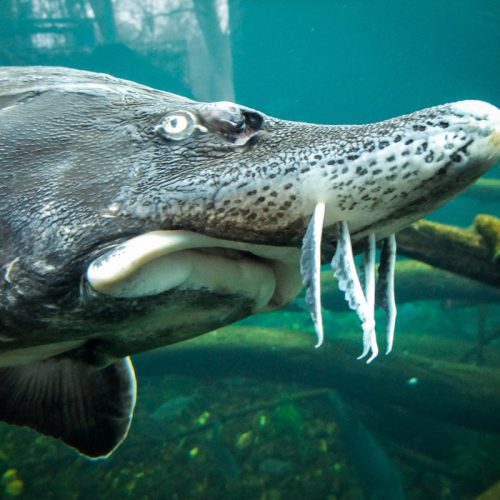News
Sturgeons in the Danube – on the brink of extinction
Sturgeons are an ancient migratory fish family which originated about 200 million years ago. The Danube River (especially in Romania and Bulgaria) preserves some of the most important sturgeon populations in the world. Within the planned Transboundary Biosphere Reserve “Mura-Drava-Danube” (TBR MDD) only two species are left: the sterlet (Acipenser ruthenus) and the nearly extinct the ship sturgeon (Acipenser nudiventris). Because of their alarmingly low numbers and the fact that sturgeons play a crucial indicatory role in healthy ecosystems, their protection is one of the main priorities within the planned TBR MDD.
Sturgeons are amongst the most threatened species on the planet: illegal fishing, loss of natural habitats and the disruption of migratory routes have had a devastating effect on all 6 sturgeon species that are native to the Danube River Basin. The situation is so dire that out of the six, five species are classed as ’Critically Endangered’ according to the IUCN List of Threatened Species, with one most probably extinct in the Danube. Especially people’s hunger for and the high economic value of caviar is regarded as the main threat for the remaining sturgeons. Steps to combat this have been taken and Romania, as well as Bulgaria introduced a ban on sturgeon fishing in 2006 and 2011 respectively, however, both bans end at the end of 2015.
As mentioned above, not only illegal fishing is a threat to the Danube sturgeons, but also the building of dams makes the survival of the species nearly impossible. Spawning migration is an integral part of the Danube sturgeons’ life cycle and as dams makes it impossible for the fish to complete their migratory routes from the black sea to the spawning sites in the upper parts of the Danube Basin. They are often confined to an area, with detrimental effect on the populations (e.g. inbreeding).
Within the TBR, the effects of such hydropower dams can be seen on the example of those two, located at the Iron Gate gorge, between Romania and Serbia. These dams are cutting off important spawning sites in the Middle Danube area which includes the river stretches of the TBR MDD. Although very occasionally migratory sturgeons are caught upstream of the Iron Gates (which shows that a few individuals manage to use the locks used by ships for their journeys), a good example of how devastating these dams to sturgeon populations are can be seen on the example of the European sturgeon (Huso huso). Weighing up to 1.4 tonnes and a length of up to 7m, the European sturgeon was always a favourable fish to catch, but the building of the Iron Gates Hydropower Plants finished off the population above the Iron Gates and their migratory routes from the Black Sea.
To conclude it can be seen that far-reaching, and more importantly, transboundary conservation measuresneed to be taken in order to ensure the survival of the Danube sturgeon species. The good news is that there is a big WWF project funded by EU LIFE running in order to do so (for further information, please see http://danube-sturgeons.org). WWF is also searching for the last Ship Sturgeons (Acipenser nudiventris) on the Danube in the TBR MDD in order to start a recovery programme. The last was last caught in Hungary near Mohacs in 2009!
